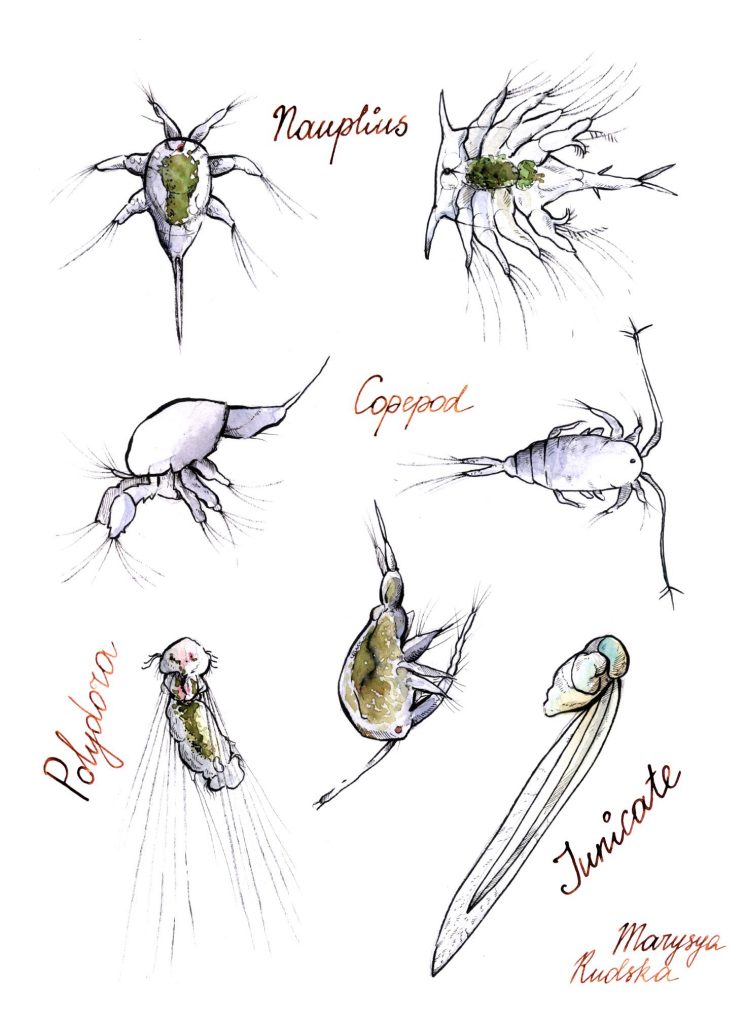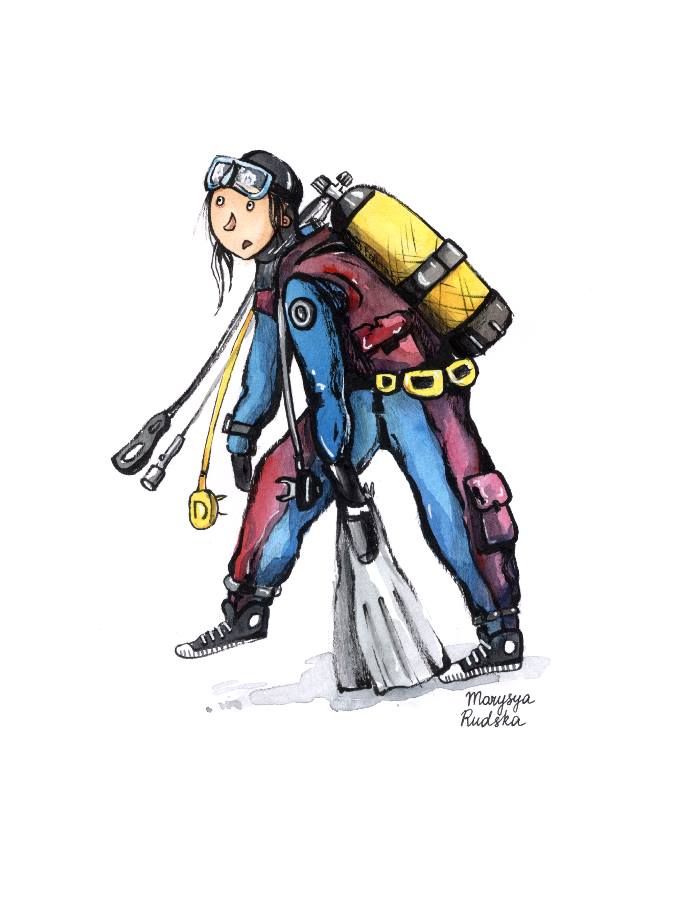by Oleksandr Pryymak & Marysya Rudska
Friday evening before a Bank Holiday weekend: we are all sitting in cars and train coaches escaping London. As expected, it was a nasty business to get away on such an evening. Despite traffic and long slow way, our luggage has been filled up not only with our diving gear, but also full of anticipation.
On the next morning, sleepy and excited, we all gather near a container full of our with kit. There were quite a few of us: Brian, Ian, Justin, Anastasiya, Preeda, Keith, Andrew, Richard, Tim, Mustafa, Mark, Rebecca, Phil, Eleanor, Anne, David, Bart, Chris, Reiko, Tomasz, Colin and us two – Sasha and Marysya.
For some of us, it was the first dive in England. “I’m sorry about your first experience”, said Chris when we were in the boat. It was a foggy, cold and cloudy morning. Poor visibility above had changed our plans, and the first dive was near the Breakwater Fort. This fort, built in 1854 to protect Plymouth, nowadays is protecting divers from the disappointment of a cancelled dive.
“Visibility was poor; water was 10-11°, light current. I struggled with my drysuit, my kit is almost as heavy as me. However, on the bottom, I realised that it was totally worth it!”, summed up Marysya.
Long-leaved seaweed grows on the fort’s wall just a few meters below the water line. Their big red leaves gently sway in the water. If you look closely at the wall, you can find a wide diversity of life forms: from delicate red sea squirts to quite big fish. If you look at the wall attentively enough – and on such dives you better had – you will find red-eyed and edible crabs in holes no less attentively looking back at you. Most of this life thrives on plankton. The same irksome plankton bloom that causes poor visibility on our dives is a feast for corals and hydroids, anemones and bizarre filtering worms.
After the entirely unwelcome morning fog, the weather becomes kinder to us. On our next dives, we had ever-improving visibility and conditions. The next destination was Eddystone Lighthouse, where a flock of seagulls on the rocks were unemotionally observing our yellow and blue RIBs. Below the waterline, in the midst of these rocks, we were flying in a waving seaweed forest. Its leaves, often covered with tiny hydroids that look like hoarfrost, reflect well the feel of refreshing cold water touching our faces. Should you just spread these leaves apart, you will find a whole new beautiful world: small white and horned nudibranchs, colourful jewellery corals, bright yellow boring sponges and slightly pink urchins.
British sea life may not look like a tourist tropical diving postcard. However, one must be ignorant not to notice the beauty and richness of its life seen up close. On a BSAC Oceanography course run annually by the University of East Anglia, we were told about the extreme productivity of cold and temperate waters in comparison to the tropics.
It is hard to believe in this until you experience floating in a milky patch of a plankton bloom. Water in these pockets becomes dominated by creatures in it, full of gelatinous or rapidly jumping plankton. This richness is contrasting to empty, deserted waters of tropical seas with their clear visibility. In those clear places, life has to fight for its scarce resources, while we are becoming illusional about its apparent abundance. All this ignorance created by our limited line of sight!
 These revelations were concluded on the first evening with a feast at the Clovelly Bay Inn. Its generous portions of brilliant pub food can be recommended as the best way to celebrate an active and saturated day!
These revelations were concluded on the first evening with a feast at the Clovelly Bay Inn. Its generous portions of brilliant pub food can be recommended as the best way to celebrate an active and saturated day!
On the second day, our divers had a surprise – excellent visibility for England. All the plankton had been swept from this area; only elegant jellyfish were filtering leftovers by gliding through the water. The opened bottom presented lazy dogfishes, and some lucky divers even spotted an angler fish!
The second night with a few sunburnt faces has been celebrated in a Mexican restaurant in Plymouth, flooded with a Uni post-graduation party. However, we were a crowd of our own that resulted in an extra private run of a harbour ferry to take us all back to our hotel, and to another late night bar nearby.
On the last day, we could run only one boat, and some of us went to relax and explore. We went to explore the marine fauna further at the Plymouth Aquarium. Their Eddystone Lighthouse aquarium has surprisingly better visibility than what we experienced. We could not stop ourselves from comparing, but this was a very pleasing feeling of connecting to what we have just seen yesterday through our masks.

